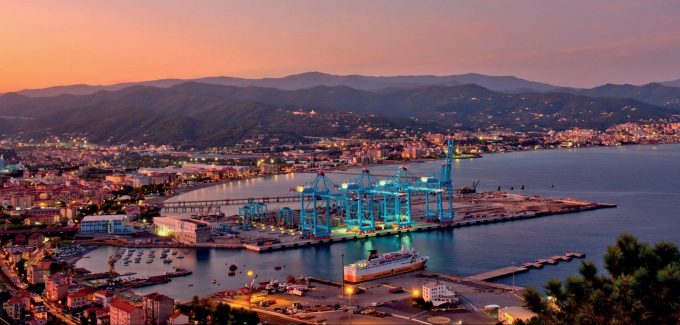Maersk is launching a feeder service between its east Mediterranean transhipment hub of Port Said and the Italian gateway of Vado Ligure to reduce Asian import transit times for central European shippers.
The company said the service, deploying two 3,000 teu vessels, would help avoid some of the congestion issues faced at Europe’s major container gateways.
“In an increasingly unpredictable environment, our customers ask for more reliable and agile supply chains – and this is exactly what the new Vado Express service will deliver,” claimed Leah Offutt, MD, Maersk Central South Europe.
Maersk claims the service, which will see its first sailing from the line’s Suez Canal Container Terminal (SCCT) on 8 July, will reduce transit times for Asian cargo to North Italy by between five and 22 days, “depending on where the cargo origin departure is at Busan in Korea or Shanghai, Ningbo, Yantian, Shekou or Xingang in China”.
Ms Offutt added: “Comprehensive /road solutions will significantly shorten transit time between Asia and Northern Italy – the second most important EU location, behind Germany, for industrial production.”
SCCT hosts three of the 2M Alliance’s Asia-Europe services, according to the eeSea liner database: the /Phoenix Asia-Adriatic loop; /Tiger Asia-Mediterranean loop; and /Jade Asia-Mediterranean service.
According to eeSea, Vado Ligure currently hosts three services: the joint Mediterranean-North America EMA service from Cosco, OOCL and ONE; the intra-Mediterranean /SHL, by Arkas and Maersk subsidiary Sealand; and Maersk’s standalone /Middle East-Europe ME2 service.
A Maersk spokesperson confirmed to WPO that the ME2 would continue to call directly at Vado Ligure after the new feeder service begins.
The development of feeder networks and the potential for greater transhipment at hub-and-spoke ports could be a crucial step in resolving congestion at Europe’s larger ports, Johan-Paul Verschuure, project director at Rebel Group, recently told the TOC Container Supply Chain conference in Rotterdam.
“The transhipment structure resulted in a flexible approach to spread congestion – carriers are able to take advantage of dropping boxes at other ports if there is a good feeder network to carry them,” he added.
Maersk’s box port operating arm, APM Terminals,bought into Vado when it acquired Fratelli Orsero’s conventional reefer terminal and set about building a new container terminal adjacent to it.Chinese firms Cosco and Qingdao Portacquired 40% and 9.9% stakes, respectively, the following year.
The highly automated terminal formally launched operations in 2019.






